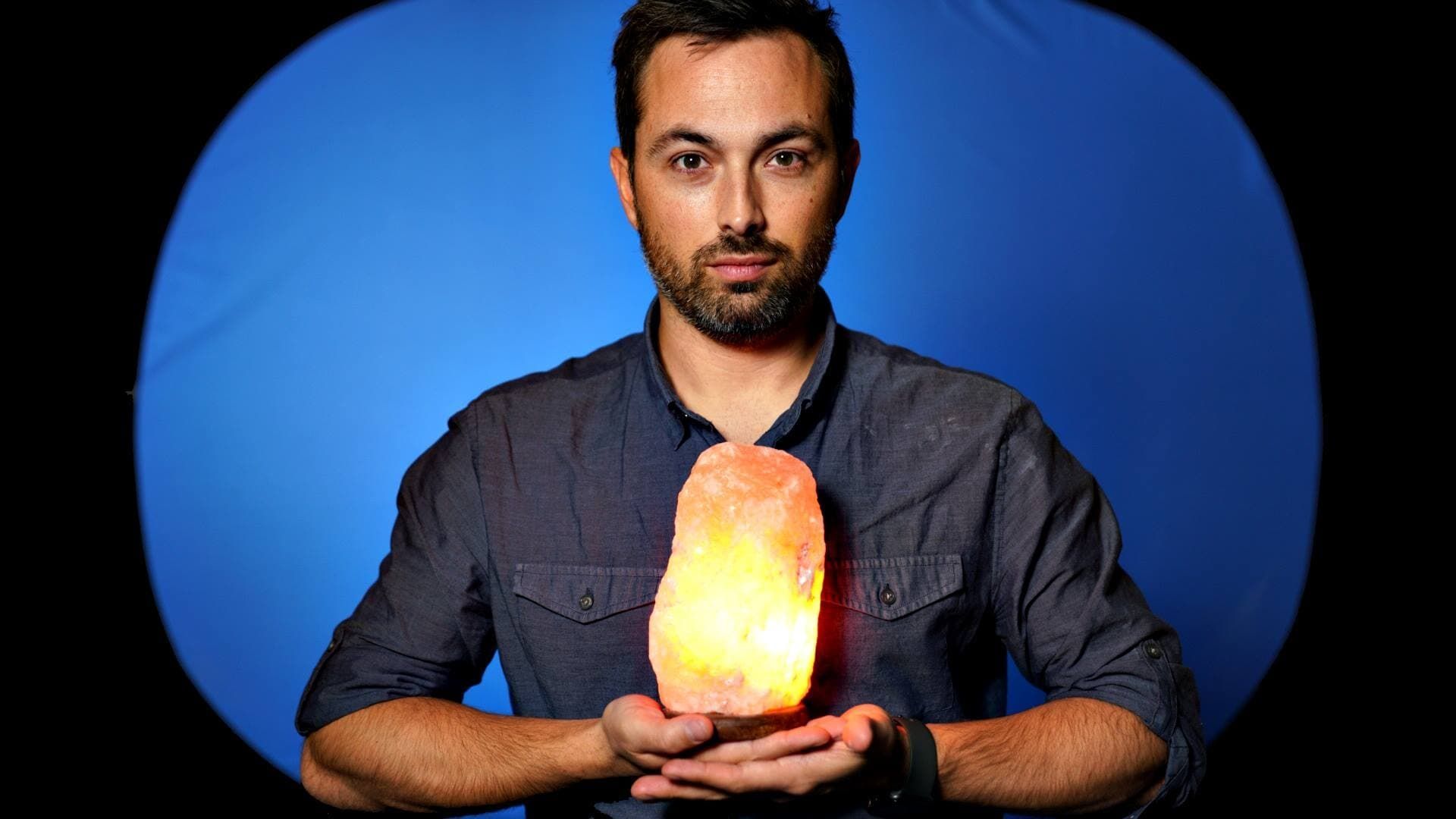

Veritasium
Season 2019
An element of truth | Science and engineering videos
Veritasium is a channel of science and engineering videos featuring experiments, expert interviews, cool demos, and discussions with the public about everything science.
Veritasium is a channel of science and engineering videos featuring experiments, expert interviews, cool demos, and discussions with the public about everything science.
Where to Watch Season 2019
31 Episodes
- Microwaving Grapes Makes Plasma
 E4
E4Microwaving Grapes Makes PlasmaA bisected grape in the microwave makes plasma. But how does it work? A grape is the right size and refractive index to trap microwaves inside it. When you place two (or two halves) close together the fields interact with each other creating a maximum of electromagnetic energy where they touch. This creates heating, sparks, and plasma, which is further fed with energy directly by the microwaves. - First Image of a Black Hole!E10
First Image of a Black Hole!The Event Horizon Telescope Collaboration observed the supermassive black holes at the center of M87 and our Milky Way galaxy (SgrA*) finding the dark central shadow in accordance with General Relativity, further demonstrating the power of this 100 year-old theory. - Why Are 96,000,000 Black Balls on This Reservoir?
 E13
E13Why Are 96,000,000 Black Balls on This Reservoir?I took a boat through 96 million black plastic balls on the Los Angeles reservoir to find out why they're there. The first time I heard about shade balls the claim was they reduce evaporation. But it turns out this isn't the reason they were introduced. - My Video Went Viral. Here's WhyE14
My Video Went Viral. Here's WhyMy hypothesis is that the algorithm, rather than viewer preference, drives views on the site. As the algorithm shifts, various YouTubers experience burnout (as what used to work no longer works) and right now click-through rate is the key metric. So clickable titles and thumbnails are the only way to get a lot of impressions and hence views - they are the only way to go viral. This leads me to wonder which audiences will become most prevalent on the site and if there will even be a place for educational content. In the long-term, hopefully YouTube is able to measure satisfaction through surveys and other metrics to ensure an optimal experience for everyone on the site. - World's Lightest Solid!
 E15
E15World's Lightest Solid!Aerogels are the world's lightest (least dense) solids. They are also excellent thermal insulators and have been used in numerous Mars missions and the Stardust comet particle-return mission. The focus of this video is silica aerogels, though graphene aerogels are now technically the lightest. - Mars Helicopter (before it went to Mars)E21
Mars Helicopter (before it went to Mars)The Mars Helicopter aims to make the first powered flight on another planet when it takes off on Mars as part of the Mars 2020 mission. I learned a lot getting to visit the drone right before it was mounted on the rover. - Engineering with Origami
 E26
E26Engineering with OrigamiOn first glance it's surprising that origami -- a centuries old art of folding paper to achieve particular aesthetics -- is applicable to engineering. But upon closer consideration there are a lot of reasons methods developed for paper folding are also applicable to engineering: origami allows you to take a flat sheet of material and convert it to almost any shape only by folding. Plus for large flat structures, origami provides a way of shrinking dimensions while ensuring simply deployment - this is particularly useful for solar arrays in space applications. Furthermore, motions designed to take advantage of the flexibility of paper can also be used to form compliant mechanisms for engineering like the kaleidocycle. Since the principles of origami are scalable, mechanisms can also be dramatically miniaturized. - Why Trees Are Out to Get You
 E27
E27Why Trees Are Out to Get YouHuge thanks to all the YouTubers who organized this. My apologies for the repost. These videos are from 2012 so my interest in trees goes back a long ways. I think these videos discuss two of the most interesting and amazing facts about our leafy friends: they are made mostly of CO2 (which comes from us breathing out amongst other sources) and they can transport water up a tube higher than any we can currently manufacture. So trees are out to get you. But we do much worse to them so we owe it to them to plant some more. 20 mil is a good start.







